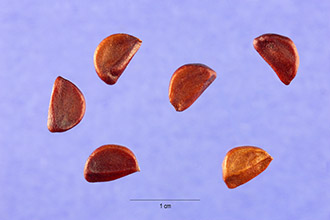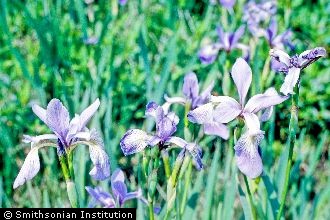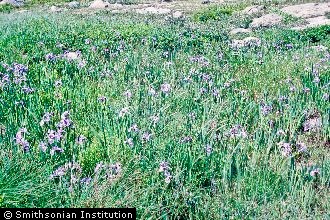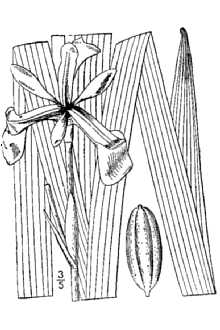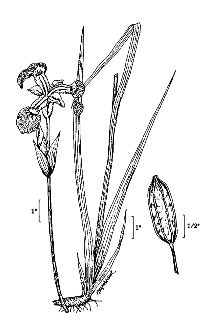Harlequin Blueflag
Scientific Name: Iris versicolor L.
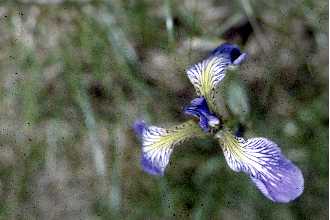
| General Information | |
|---|---|
| Usda Symbol | IRVE2 |
| Group | Monocot |
| Life Cycle | Perennial |
| Growth Habits | Forb/herb |
| Native Locations | IRVE2 |
Plant Guide
Use soil moisture sensors to measure the soil moisture of Harlequin Blueflag.
Fact Sheet
Uses
This species is primarily utilized for its brightly colored floral display. The root mass of established colonies provides good shoreline protection. Although the seed is large and kernel-like, there is no documentation of wildlife consumption; the root stock is fed upon by aquatic rodents.
Status
Please consult the PLANTS Web site and your State Department of Natural Resources for this plant’s current status (e.g. threatened or endangered species, state noxious status, and wetland indicator values).
Description
Blueflag’s sword-like leaves emerge from thick horizontal root stock (corm) which are covered with fibrous roots, This emergent will grow to heights of four feet in spreading clumps, The individual leaves are somewhat shorter than the entire plant, This species will radially grow less than 2 feet per year, From the nearly straight flowering stems emerge large blue to violet-blue showy flowers, They bloom from May to July, The three petaled flowers are often finely variegated with yellow, green, and white, The flower develops a three celled capsule which is about 1 1/2 inches long and 3/4 of an inch in diameter, Within each cell, two rows of flattened round seeds form, There are an average of 18,000 seeds per pound, Use soil moisture sensors to measure the soil moisture of Harlequin Blueflag.,
Adaptation and Distribution
Distribution
Distribution
The native distribution of blue flag spans from Newfoundland to Manitoba, south to Florida and Arkansas. It is typically encountered in marshes, swamps, wet meadows, along shorelines, and in forested wetlands. It performs best on sites with unconsolidated soils high in organic content, in direct sunlight. It will tolerate moderately brackish water, partial shade, and permanent inundation up to 6 inches deep. For a current distribution map, please consult the Plant Profile page for this species on the PLANTS Website.
Establishment
Like many wetland species, this perennial emergent can be effectively established using vegetative and seed techniques. To propagate wild iris by vegetative © Jim Stasz MD-National Capital Park & Planning Commision @ USDA NRCS PLANTS means, single corms or bulbs can be divided or cut from the parent root system. These propagules are then potted or directly field planted before the end of July. Plant along the water line. To field or nursery grow seedlings, the seeds should be stratified in moist peat moss for at least three months at 36 to 0 degrees Fahrenheit. Naturally the seed will shatter from their pods in fall; wash on land at the soil/water interface and over winter at that location; then, germinate in spring. Fall seeding can be considered, but is often met with less success than with nursery transplants. This plant is easily established and increased under nursery conditions. With organic soils, minimal fertilization, and good water depth control, this perennial will thrive.

